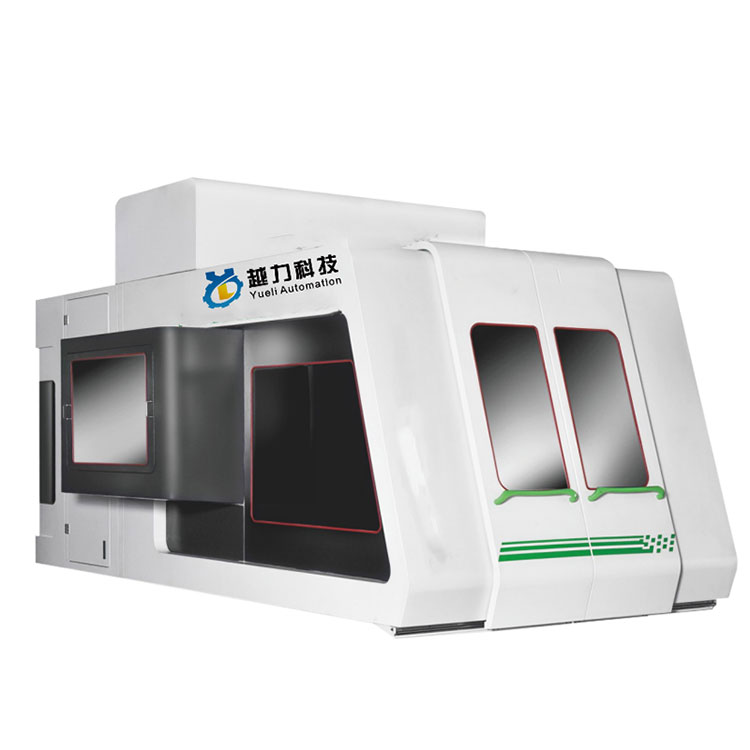CNC Machining Center: Revolutionizing Precision Manufacturing
2025-03-11
In today's fast-paced manufacturing environment, precision and efficiency are paramount. One of the most advanced tools contributing to this is the CNC machining center. Known for its versatility and capability to perform a wide range of tasks, CNC machining centers have become essential in industries that require high-precision parts and components. In this blog, we will explore what CNC machining centers are, their functions, and the many advantages they offer to manufacturers.
What is a CNC Machining Center?
A CNC (Computer Numerical Control) machining center is an advanced machine tool used in manufacturing to automate the process of machining parts. It is controlled by a computer, which precisely guides the tool movements according to a set of programmed instructions. CNC machining centers can perform a variety of operations, such as drilling, milling, turning, and grinding, depending on the machine’s capabilities.
These machining centers are equipped with multiple axes that allow for complex movements of both the workpiece and the cutting tool. The integration of a computer system helps achieve high precision and repeatability, making CNC machining centers indispensable for industries that demand intricate and high-quality parts.
Types of CNC Machining Centers
There are several different types of CNC machining centers, each designed for specific tasks. The most common types include:
1. Vertical CNC Machining Center
The vertical CNC machining center features a vertically oriented spindle, which is ideal for performing operations like drilling, milling, and boring. These machines are often used for smaller, complex parts and are commonly found in industries such as aerospace, automotive, and electronics.
2. Horizontal CNC Machining Center
In a horizontal CNC machining center, the spindle is positioned horizontally, which provides greater stability when machining larger, heavier workpieces. These machines are typically used for tasks that require high-volume production and greater precision, such as in the automotive and metalworking industries.
3. 5-Axis CNC Machining Center
As the name suggests, a 5-axis CNC machining center has five axes of movement, allowing the cutting tool to approach the workpiece from virtually any direction. This type of machine is used for highly complex parts that require precise machining from multiple angles, often in industries like aerospace and medical device manufacturing.
4. Turn-Mill CNC Machining Center
Turn-mill CNC machining centers combine turning and milling functions in a single machine. They are typically used for machining parts that require both rotational and linear movements, allowing for greater flexibility and efficiency.
How CNC Machining Centers Work
The working process of a CNC machining center involves several key steps:
1. Designing the Part:
The first step is to create a detailed design of the part or component to be machined. This design is typically done using CAD (Computer-Aided Design) software, where the dimensions, shape, and features of the part are defined.
2. Creating the CNC Program:
Once the design is complete, the next step is to translate it into a language that the CNC machine can understand. This is done by generating a CNC program using CAM (Computer-Aided Manufacturing) software. The program contains a set of instructions that guide the machine's movements, tool changes, and cutting parameters.
3. Setting Up the Machine:
After the CNC program is created, the machine is set up for the specific job. The workpiece is secured in the machine, and the tools required for machining are installed. The machine operator ensures that everything is correctly calibrated and ready to run.
4. Machining the Part:
Once the setup is complete, the CNC machine begins the machining process. The computer controls the movement of the cutting tool along the programmed axes, precisely cutting and shaping the workpiece according to the design. The machine operates with great precision and can perform multiple operations in a single cycle.
5. Finishing and Inspection:
After the machining process is complete, the part is removed from the machine, and the final inspection is conducted to ensure it meets the specified tolerances and quality standards. Any necessary finishing operations, such as polishing or coating, can also be performed at this stage.
Advantages of CNC Machining Centers
CNC machining centers offer numerous benefits, making them the preferred choice in many manufacturing industries. Some of the key advantages include:
1. Precision and Accuracy
One of the most significant benefits of CNC machining centers is their ability to produce parts with incredible precision. The computer-controlled system ensures that each part is made exactly to the specifications, with minimal human intervention. This level of accuracy is essential for industries that require high-quality components, such as aerospace, automotive, and medical manufacturing.
2. High Productivity
CNC machining centers are designed to operate efficiently and at high speeds, which increases productivity. Once the machine is set up and the program is loaded, it can run for extended periods with minimal supervision, allowing manufacturers to produce large quantities of parts in a short amount of time.
3. Flexibility
CNC machining centers are highly versatile and can be used to create a wide range of parts with varying shapes, sizes, and materials. The ability to switch between different operations, such as milling, turning, and drilling, on a single machine makes CNC machining centers an excellent choice for manufacturers who need to handle diverse production requirements.
4. Reduced Human Error
Since CNC machining is fully automated, the chances of human error are significantly reduced. The computer program ensures that the machine follows precise instructions, eliminating the inconsistencies that can result from manual machining processes. This leads to more consistent quality and fewer defective parts.
5. Cost-Effective for High-Volume Production
While CNC machining centers may have a higher initial investment compared to manual machines, they are cost-effective in the long run, especially for high-volume production. Their speed, precision, and ability to produce large quantities of parts reduce the overall cost per unit, making them ideal for mass production.
6. Safety
CNC machining centers improve safety by automating many of the processes that used to require manual intervention. Since the machine is controlled by a computer, the operator does not need to be in close proximity to the cutting tools, reducing the risk of injury.
Applications of CNC Machining Centers
CNC machining centers are used in a wide range of industries, including:
- Aerospace: CNC machining centers are used to produce highly precise and complex components for aircraft, such as engine parts, landing gear, and structural components.
- Automotive: CNC machining centers are essential in the production of car parts, including engine components, transmission parts, and brake systems.
- Medical Devices: CNC machining is used to create critical components for medical devices, such as implants, surgical instruments, and diagnostic equipment.
- Electronics: CNC machines are used to manufacture components for electronic devices, including enclosures, connectors, and circuit boards.
- Tooling and Molds: CNC machining centers are also used to create molds, dies, and tooling for various manufacturing processes.
Conclusion
CNC machining centers have transformed the world of manufacturing by providing unmatched precision, speed, and versatility. Their ability to automate complex machining tasks with high accuracy has made them indispensable in industries ranging from aerospace to medical devices. As technology continues to advance, CNC machining centers will undoubtedly play an even more significant role in shaping the future of manufacturing, offering innovative solutions for creating high-quality parts and components with efficiency and reliability.



